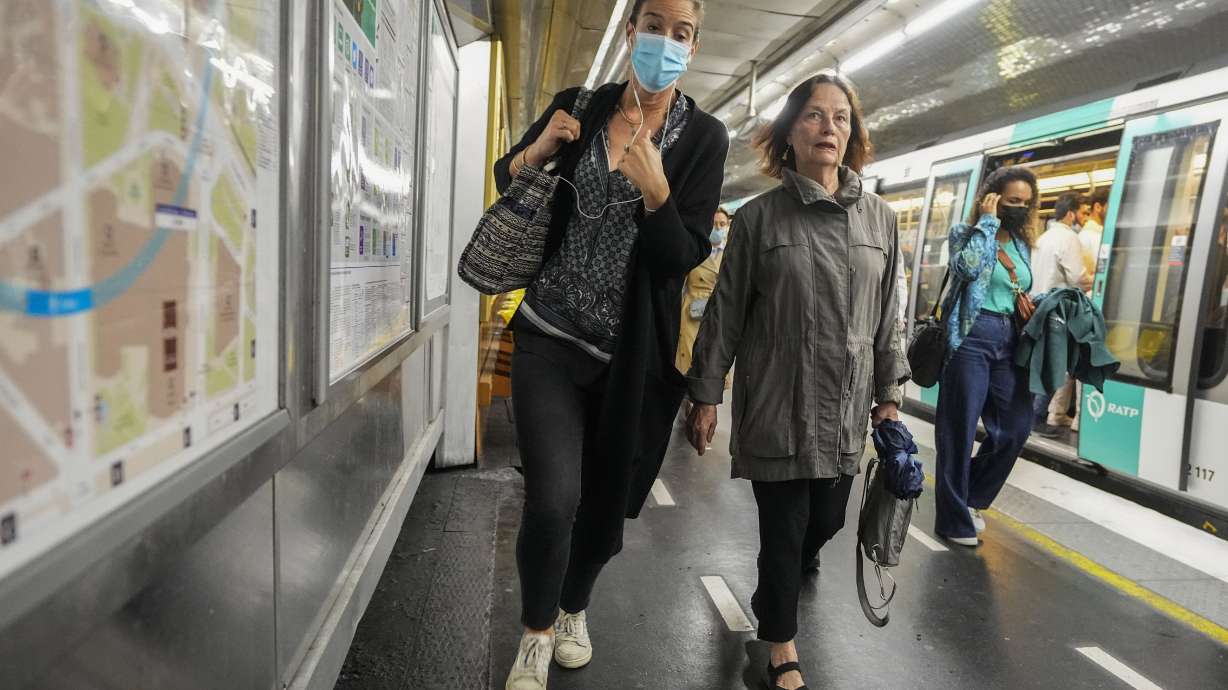Estimated read time: 3-4 minutes
This archived news story is available only for your personal, non-commercial use. Information in the story may be outdated or superseded by additional information. Reading or replaying the story in its archived form does not constitute a republication of the story.
SALT LAKE CITY — Much of Europe is a hot spot for COVID-19, thanks to the latest versions of the omicron variant.
The fast-spreading omicron subvariants known as BA.4 and BA.5 are sweeping through France, Greece, Italy and other major tourist destinations this summer as pandemic restrictions have eased. European cases are up some 70% in the past two weeks, according to data reported by the New York Times.
The New York Times said there were 57 coronavirus cases per 100,000 people in Europe as of Wednesday, an increase from 33 per day per 100,000 two weeks earlier and the biggest jump in case counts seen anywhere in the world. France, with 190 cases per 100,000, ranks behind only Brunei in Asia and New Zealand.
The BA.5 subvariant is now dominant in the United States, including in Utah, where the seven-day average case count fell just under 6% to nearly 991 cases statewide as of numbers released Thursday by the Utah Department of Health and Human Services.
Both BA.4 and BA.5 are believed to be more transmissible than previous versions of the omicron variant that sent cases soaring to record levels last winter, able to more easily infect the fully vaccinated and boosted as well as those who've already had COVID-19, even recently.
But even though hospitalizations are rising in many European countries, Dr. Michael Ryan, the executive director of the World Health Organization's Health Emergencies Program, told the New York Times "what we're not seeing is an increase in intensive care unit admissions, so the vaccines are still very much working."
Ryan also said the current wave hitting Europe could be worse, describing "almost a collapse in testing" that may mean the actual number of cases is much higher. Under Utah's "steady state" pandemic response, most testing for the virus has been turned over to private providers, and the results from home test kits are not reported.
Utah continues to see more people hospitalized for COVID-19, although there was a slight decrease in new admissions. The state's weekly update showed a seven-day average of just over 189 people hospitalized, just under a 15% increase, and nearly a 9% increase in ICU cases, to a seven-day average of more than 30 people.
State health officials reported 14 additional deaths from COVID-19 in seven counties — Box Elder, Cache, Carbon, Davis, Salt Lake, Summit and Utah — for the week ending Thursday, bringing the number of lives lost to the virus in Utah to 4,847.
People who have gotten their COVID-19 shots or the virus itself still have strong protection against severe illness, said Dr. Brandon Webb, an Intermountain Healthcare infectious diseases physician, even as the omicron subvariants are increasingly able to evade the antibodies produced by vaccinations and infection.
"We have lower risk of hospitalization as we continue to see growing immunity at large within the community. What that does is it buffers that severe outcome. That's what we're seeing right now across the country, high community transmission but low rates of hospitalization and death," Webb said. "We're very grateful for that."
And although the federal government is making an antiviral treatment for COVID-19 more accessible by allowing pharmacists to prescribe the pills, the doctor said that's "not a substitute for tried and true public health measures that have greatly benefited us," especially vaccinations.
"One of the most important things high-risk individuals can do is get to be fully vaccinated," Webb said, including the booster doses recommended by the Centers for Disease Control and Prevention — one for everyone 5 and older and at least one more for those over 50 or with certain medical conditions.










